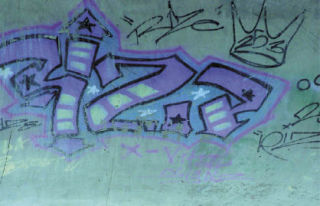Gang graffiti splashed on school bathrooms and on buildings and fences; toughs and wanna-be toughs flashing gang signs; kids wearing the colors; heads crowned with dew rags.
With gang issues that have plagued cities like Tacoma and Federal Way for years threatening to ooze eastward into Auburn, residents keen to keep this plague away need to know how to spot it.
At 6 p.m., Thursday, Oct. 23 at a city-hosted seminar on gang awareness and intervention at the Auburn Senior Center, community leaders will have a chance to hear what gang experts have to say about this problem.
Auburn Police Officer Jason Blake will talk about gang activity and intervention methods. He will also answer questions at the two-hour event.
Blake, a member of the city’s Gang Task Force, was unavailable for comment.
But Auburn Mayor Pete Lewis said the idea is to educate community leaders that Auburn is not immune to the problems gang activity can wreak on a community.
“It isn’t so much a problem of gangs established in the city of Auburn,” Lewis said. “For the last three to four years, there have been attempts to form gangs.”
Lewis cited an incident when members of a recognized gang married into a Muckleshoot tribal family and were living on the reservation. Tribal cooperation, however, helped persuade the gang members to move along. He alluded as well to several failed attempts gangs have made to move eastward from Tacoma, notably into the city of Pacific.
Still Auburn police and city workers say there has been a spike in gang graffiti and drawings on buildings and structures throughout the city.
“We have been so fortunate, but luck and coincidence cannot carry you through forever,” Lewis said. “So what we want to do is be very proactive in this. We want to get out to the community through the school district and some other folks and say, ‘Here are some tell-tale signs. Here’s some ideas when gangs are trying to form, here’s some of the things you might see evidenced in types of graffiti or your children’s behavior or when gangs might be trying to recruit.’
“We want to try and nip this in the bud every chance we can, because we have been so fortunate compared to other communities. When you look at some of the other folks around us such as Kent and Federal Way, we have been blessed to date. We need to be proactive in getting this information out to our folks and be very vigilant,” Lewis said.
According to a report issued by the Washington Human Rights Commission in June of 2007, law enforcement officials, school administrators and community members across the state insist that gang membership has increased and that this increase has spawned more violence and criminal activity.
In Seattle alone, there are an estimated 30 to 60 gangs.
According to the report, gang experts have noticed some gangs migrating from Western Washington to Eastern Washington. Technology, ease of obtaining a firearm, and criminal sophistication are often cited as reasons for the increase in gang membership and authority in the state.
Gangs are recruiting youth at younger ages, including grade school kids.
“We have to step it up because, again, there is so much pressure from areas around us that sooner or later some of these folks are going to come back and try it again and we have to be prepared,” Lewis said.
The Muckleshoot Indian Tribe established a successful Gang Intervention Program in 1997 ago to address gang activity on and near the tribe’s reservation.
Robert Whale can be reached at 253-833-0218, ext. 5052, or rwhale@reporternewspapers.com



